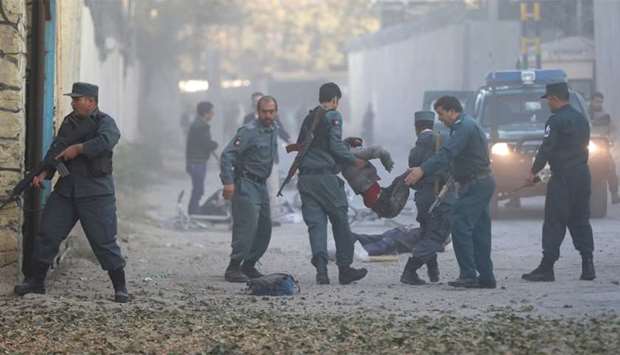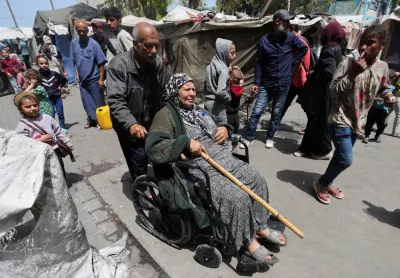For the fourth year in a row, more than 10,000 civilians have been killed or injured in the conflict in Afghanistan, the United Nations said in its annual report on civilian casualties on Thursday.
A total of 3,438 people were killed while 7,015 others were injured, indicating an overall reduction of 9 per cent compared to 2016, the UN said, adding that it doesn't have a complete overview over the situation in some parts of the country due to Taliban control.
Suicide and complex attacks together with the use of improvised explosive devices were the leading cause of civilian casualties. They accounted for 40 per cent of all civilian casualties during the year.
A total of 22 per cent of the casualties - 605 deaths and 1,690 injuries - were caused by suicide and other complex attacks with 16 per cent of such casualties occurring in the capital Kabul alone.
The largest attack in front of the German embassy in Kabul killed 92 people and injured another 491 people, according to the report. President Ashraf Ghani had previously spoken of 150 dead.
Casualties from suicide and complex attacks rose by 17 per cent countrywide compared to 2016, marking the highest number since the UN began documentation in 2009.
This figure is followed by ground engagements which caused 33 per cent of all civilian casualties, decreasing by 19 per cent compared to the previous year.
The decrease was mainly due to Afghan security forces being more considerate of civilian casualties by, for example, reducing indiscriminate fire into densely populated areas.
According to the report, a disturbing increase was seen in attacks against places of worship, religious leaders and worshippers. Such attacks killed 202 people and injured another 297 during 38 attacks last year, or about three times as many as during the previous year.
Islamic State militants are responsible for a large number of these attacks, especially on Shia mosques.
A total of 4,403 women and children were either killed or wounded during the year in what Tadamichi Tamamoto, the UN Secretary General's Special Representative for Afghanistan, called ‘appalling human suffering’.
Although casualties among children decreased by 10 per cent to 861 dead and 2,318 injured, casualties among children still account for 30 per cent of all civilian casualties throughout the year.
Airstrikes by Afghan and US forces, which increased by seven per cent, killed 295 people and wounded 336 others, making up six per cent of the overall casualty figures.
Insurgents account for 65 per cent of the overall casualty figures, with 42 per cent attributed to Taliban militants and ten per cent to Daesh, the UN report says.
It attributes 16 per cent to Afghan forces and 2 per cent to international forces, with the rest remaining unclear.
Last year, the UN changed its categorization of Afghanistan from post-conflict to a country in active conflict.



